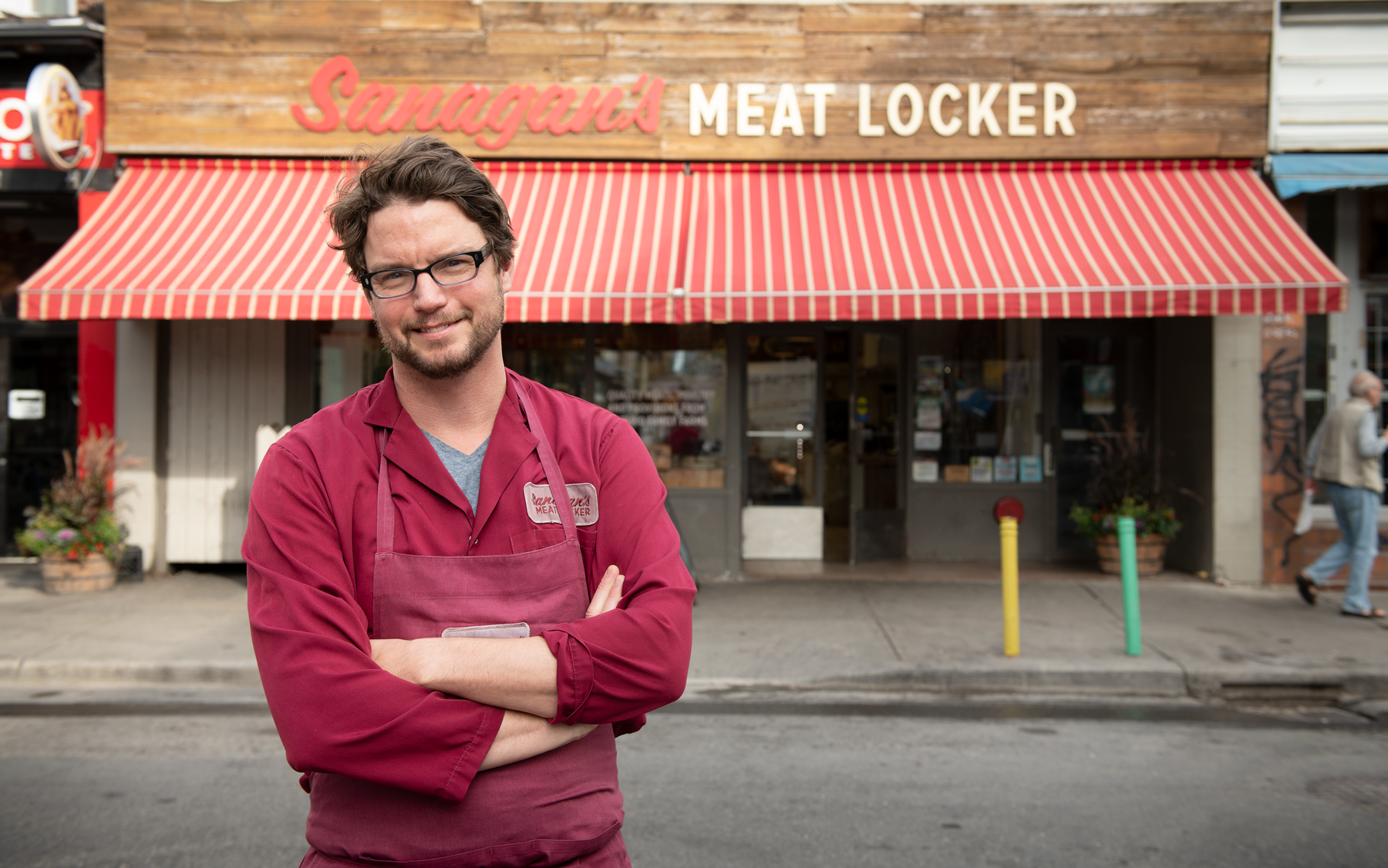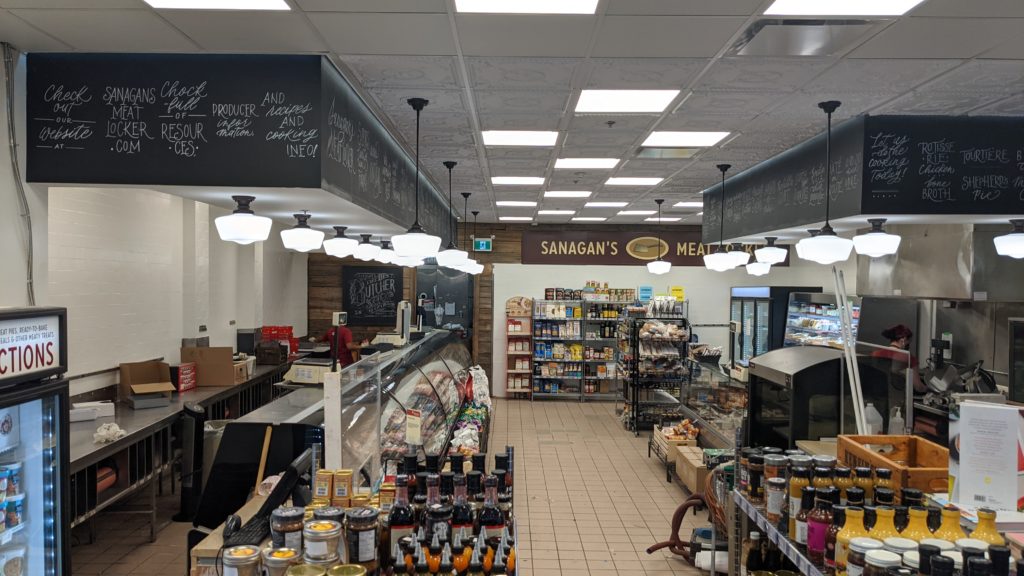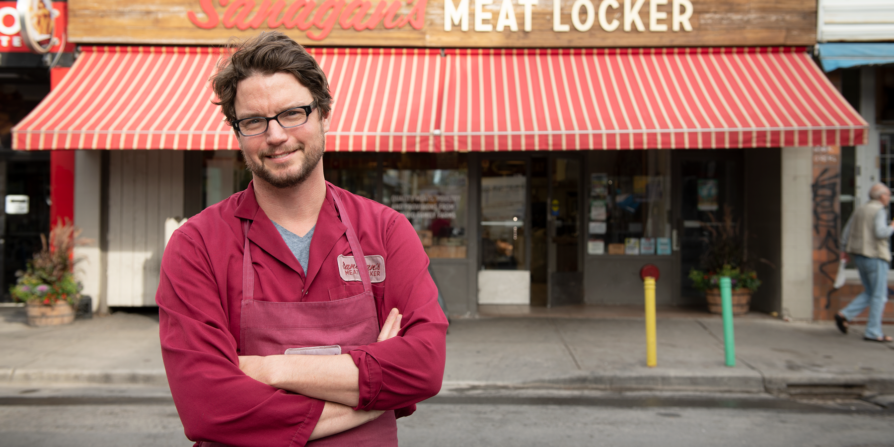
Sanagan’s Meat Locker: going green for the community
If you’re a meat-eater anywhere near Toronto, you’ve likely heard of Peter Sanagan. He champions high-quality, local meat at his butcher shops in Kensington Market and Little India, and he’s had an undisputable impact on the city’s food scene.
Peter is also doing his part to make Sanagan’s Meat Locker a sustainable choice for consumers. Both locations are bullfrogpowered with green electricity and green natural gas, he works closely with farmers who practice ecologically sound agriculture, and the team is working to reduce energy consumption and waste.
“No matter what size of business it is, I believe we still have a responsibility to our community and customers to approach any decisions with sustainability in mind,” Peter told Bullfrog.
Sustainability at Sanagan’s
Sanagan’s recently changed all of their fluorescent tube lights to LED panels. They also eliminated a large fridge with a remote compressor, upgrading to a more energy efficient, smaller case that suits their needs better. These changes will reduce their electricity usage considerably , saving the business money and shrinking their carbon footprint.

Peter’s team started taking sustainability planning seriously about five years ago. Since then, they’ve reduced their single-use plastics, lowered their energy usage, and continued to plan for a more sustainable model. “The most challenging piece of doing this is finding all the accurate information and products,” Peter said. “There are unfortunately not a ton of resources for small businesses.”
Peter recommends reaching out to other small business owners to help crowdsource sustainability tips. “If I liked the compostable container a restaurant used, I would ask them where they purchased it, and follow through with that lead. It’s all about finding the time to research, ask questions, and get in touch with the right people,” he said.
What’s on the outside counts
The COVID-19 pandemic has made it difficult to reduce single-use products, but Peter isn’t giving up.
The biggest thing for them right now is finding packaging suitable for e-commerce deliveries: they need a solution that will keep the product cooler for longer and is either fully recyclable or made entirely out of post-consumer materials. They plan to implement their new packaging in the next couple of months.
“Finding sustainable packaging is difficult,” Peter admitted. “There aren’t as many players as one would think, and the information isn’t easily found for small companies like mine.” Hopefully, as more businesses like Sanagan’s increase the demand for sustainable packaging options, suppliers will rise to meet those needs.
Peter noted that his sustainability initiatives are popular with customers and staff alike. “As a small business, we’re all about serving our community,” he added. “It’s important that we continue to look for ways to improve our carbon footprint in sync with what our customers are doing in their own lives.”
